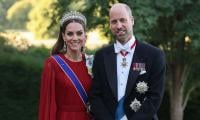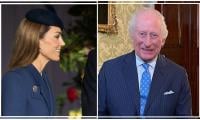No surprises
The by-election in Peshawar’s NA-4 constituency failed to produce any big surprises. As expected, the PTI won this seat by a large margin. If the by-election in Lahore was all about Nawaz Sharif, this election was all about Imran Khan. This by-election was seen by many as a real test of Imran Khan’s popularity. The election result has proved that he is still popular with the electorate.
However, even though the PTI has won this election comfortably, its support and vote bank is on the decline. Its share of votes and its margin of victory have been reduced. While it is still a power to reckon with in Khyber Pakhtunkhwa’s politics, the party is a power that is in decline. The PTI candidate fielded for the NA-4 by-election secured 45,734 votes – 34.8 percent of the 133,960 votes that were polled. In 2013, the PTI had secured 55,134 votes, 39.9 percent of the total votes cast.
The PTI has also proved one thing through this by-election: it has learned traditional power politics and has now applied it in this by-election. The party has clearly demonstrated that it is not different from the other traditional political players. It awarded a ticket to new entrant in the party who belonged to the influential Arbab family – Arbab Aamir Ayub, the younger brother of former MNA Arbab Zahir (late). Arbab Zahir had won four elections from this constituency on an ANP ticket. Arbab Aamir Ayub served as a mayor from 2005 to 2009 through the support of the ANP. So, the Arbab family will continue to dominate the constituency, even if it is on a different symbol.
The PTI is opting for electables and ignoring its own diehard political activists. It had initially emerged with the slogan of ‘change’. The party had made the claim that it will introduce a new culture of politics and put new, young and clean candidates in the limelight. However, over the last few years, the PTI has transformed itself from a party of change into a party of electables and billionaires. It is not interested in changing the socioeconomic structures and empowering the working class and the lower middle class.
During the 2013 general elections, the PTI had taken a solo flight. However, in the 2017 by-poll, its candidate enjoyed the support of two religious parties in the province – the JUI-S of Samiul Haq and the PAT of Dr Tahirul Qadri. Yet, the PTI lost 10,000 votes in this election and its margin of victory fell from 35,000 votes to 22,000 votes.
The JI, a junior partner of the PTI-led coalition government in KP, had fielded a candidate who only secured 7,668 votes – only 5.8 percent of the 133,960 votes that were cast. In the 2013 general elections, the JI’s candidate had secured 16,493 votes and remained on the third position by grabbing 11.9 percent of the total number of votes.
On the other hand, the candidates of three other political parties – the PML-N, the ANP and the PPP – had improved their position in the NA-4 Peshawar by-elections. But this improvement was not big enough to change the result. While the PML-N’s leadership made tall claims of victory, it failed to materialise this support. It also failed to put up a close fight.
The PML-N candidate received 24,790 votes, which amounted to 18.9 percent of the total number of votes cast during the election. In the 2013 general elections, the PML-N candidate had received 20,412 votes – 14.8 percent of the 138,352 votes that were polled.
The ANP made a surprising recovery in the NA-4 by-election. Its candidate had secured the second spot by securing 24,874 votes, which is 18.9 percent of the total number of votes. In the 2013 general elections, the ANP was on the fourth position with 15,795 votes. The ANP increased its vote bank by 9,035 votes during this by-election. This indicates the party’s resurgence in provincial politics. The ANP will pose a real threat to the PTI in many constituencies in KP.
One thing is clear from this by-election: different political parties will be forced to form electoral alliances or make seat adjustments. It is possible that the PML-N, the QWP and the JUI-F will form an alliance or make seat adjustments. On the other hand, the ANP and the PPP are likely to make seat adjustments.
The PPP has, once again, failed to impress with its performance. It is trying to win back its lost support through the traditional manoeuvres. Its leadership is not ready to change its policies, ideas and programme to regain people’s support. The PPP needs to adopt more radical policies, slogans and programmes to attract new segments of the youth and workers.
The only element of surprise from this by-election was produced by the Tehreek-e-Labbaik Ya Rasul Allah (TLY). Its candidate secured 9,935 votes – amounting to 7.6 percent of the total number of votes – while the MML candidate received 3,789 votes – 2.9 percent of the total votes.
After gaining some experience from the NA-120 by-election, the two new religious parties have successfully stepped into the politics of Khyber Pakhtunkhwa. Both parties received around 14,000 votes. This result clearly reflects a trend that is emerging on the electoral scene. It has proved that the success of these parties in Lahore was not an isolated incident but the manifestation of a general trend that exists on a national level.
The targets are clear – Nawaz Sharif and the PML-N. Both the TLY and the MML have, for different reasons, built a strong anti-Nawaz Sharif narrative within the extreme right-wing religious sections of society. The PTI will be the ultimate beneficiary of this narrative.
The writer is a freelance journalist.
-
 HBO Mulls Major 'Game Of Thrones' Spin-off Focusing On A Stark
HBO Mulls Major 'Game Of Thrones' Spin-off Focusing On A Stark -
 Ashton Kutcher Says He's Proud Of Demi Moore
Ashton Kutcher Says He's Proud Of Demi Moore -
 Why Prince William, Kate Hired A Crisis Expert Despite Royal 'calm'?
Why Prince William, Kate Hired A Crisis Expert Despite Royal 'calm'? -
 Extent Of Meghan Markle’s Fears Gets The Spotlight: ‘The Press Detest Her Which Is A Problem’
Extent Of Meghan Markle’s Fears Gets The Spotlight: ‘The Press Detest Her Which Is A Problem’ -
 Caitlyn Jenner Finally Reacts To Kylie, Timothee Chalamet Relationship
Caitlyn Jenner Finally Reacts To Kylie, Timothee Chalamet Relationship -
 Prince William’s Beefed Up PR All Set To Fight Off ‘plot’ And ‘it Might Not Be Long’
Prince William’s Beefed Up PR All Set To Fight Off ‘plot’ And ‘it Might Not Be Long’ -
 Kate Middleton Ups A New Role Unofficially For King Charles As William Prepares His Coronation
Kate Middleton Ups A New Role Unofficially For King Charles As William Prepares His Coronation -
 Teyana Taylor Says She Misread Leonardo DiCaprio Globes Moment
Teyana Taylor Says She Misread Leonardo DiCaprio Globes Moment -
 A$AP Rocky Reveals What Encouraged Him To Date Rihanna
A$AP Rocky Reveals What Encouraged Him To Date Rihanna -
 Newborns At Risk: Health Experts Warn Your Baby Could Already Have Diabetes
Newborns At Risk: Health Experts Warn Your Baby Could Already Have Diabetes -
 Sarah Ferguson Updates Her Plans Now That Andrew’s Eviction Is Nine Days Away
Sarah Ferguson Updates Her Plans Now That Andrew’s Eviction Is Nine Days Away -
 Hailey Bieber Sends Cease And Desist To TikToker
Hailey Bieber Sends Cease And Desist To TikToker -
 Kate Middleton Celebrates England Women's Rugby Stars After World Cup Win
Kate Middleton Celebrates England Women's Rugby Stars After World Cup Win -
 Kris Jenner Dubs Chicago West Her 'sweet Angel' As She Turns Eight
Kris Jenner Dubs Chicago West Her 'sweet Angel' As She Turns Eight -
 Josh Charles Credits Taylor Swift For His, Ethan Hawke’s Moon Person Trophies
Josh Charles Credits Taylor Swift For His, Ethan Hawke’s Moon Person Trophies -
 Jodie Foster Voices Opinion About 'misogyny'
Jodie Foster Voices Opinion About 'misogyny'



